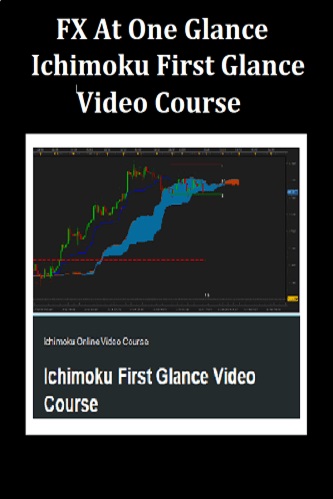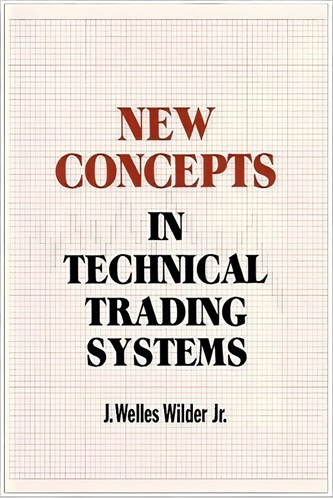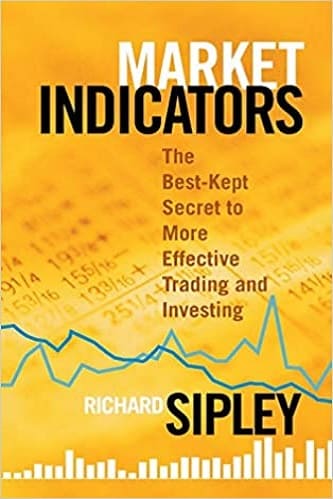Articles
Entering The Price Zone By Walid Khalil and David Steckler
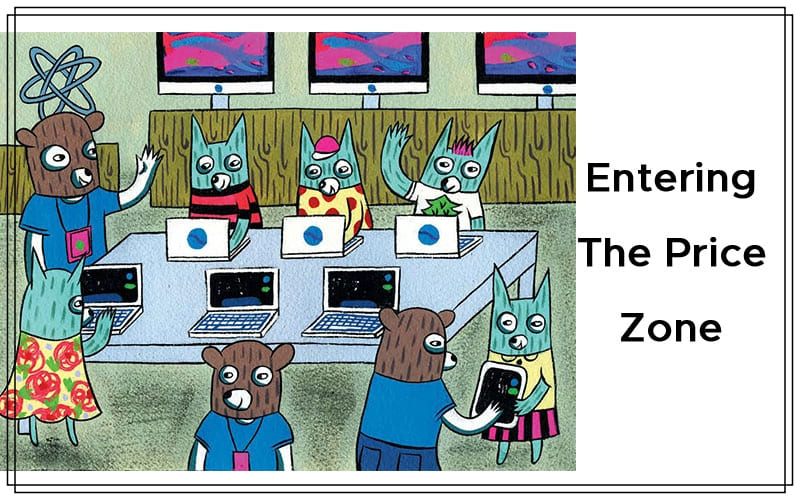
In this second part of the series, we introduce the price zone oscillator (PZO), a complementary indicator to the volume zone oscillator (VZO). In our last article, we introduced a new oscillator that provides better guidance to buying and selling levels for securities: the volume zone oscillator (VZO). This time, we introduce a similar, complementary indicator: the price zone oscillator (PZO). See “Price Zone Oscillator,”.
The formula for Pzo depends on only one condition: If today’s closing price is higher than yesterday’s closing price, then the closing price will have a positive value (bullish); otherwise it will have a negative value (bearish).
THE PRICE ZONE OSCILLATOR
Like VZO, PZO has overbought and oversold levels. It is useful for identifying at which zone (bullish or bearish) price is positioned. PZO is useful in uptrends, downtrends, or sideways market conditions. Please review the daily chart in Figure 1 of DIA, the Dow Jones Industrial Average SPDR, with PZO. Just like with VZO, the price crossing the 60-day exponential moving average (EMA) is the determinant between bullish (above the EMA) and bearish (below the EMA) conditions. When the 14-day average directional movement index (ADX) is below 18, the action is considered to be sideways regardless of whether price is above or below the EMA.
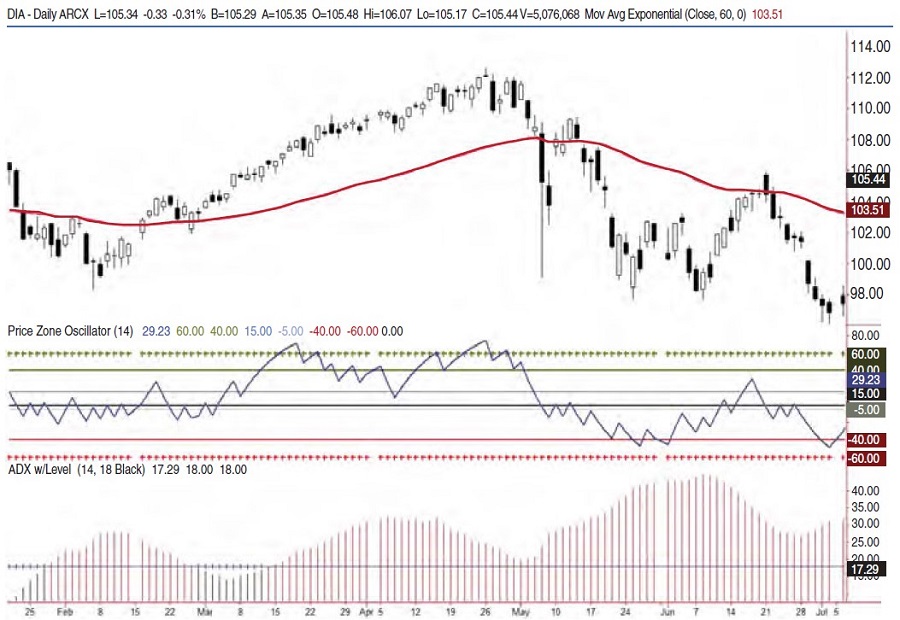
FIGURE 1: PRICE ZONE OSCILLATOR. The components of the PZO are a 60-day exponential moving average (EMA), 14-period ADX, and seven oscillator zones at +60, +40, 0, -5, -40 and -60.
Also like VZO, the components of PZO are a 60-period EMA; a 14-period ADX; and seven oscillator zones, at +60 (extremely overbought), +40 (overbought), +15, zero, -5, -40 (oversold), and -60 (extremely oversold).
- PZO crosses from below -40 to above -40 (oversold reversal)
- A retracement down from +40 that fails to reach -40 is common during an uptrend. PZO will not reach the lower boundary and will rebound from a low above -40. Thus, crossing from below zero to above zero generates a buy signal. To reduce whipsaws, you can wait for a crossing from below zero to above +15.
There are three selling conditions during a long position:
- When PZO goes above +60 and starts to go down
- When a negative divergence appears at an extreme level and PZO breaks below +40
- When price goes below the 60-day EMA and PZO goes below zero.
DOWNTREND SYSTEM RULES
When price is below the 60-day EMA and ADX is greater than 18, sell short signals are issued when:
- PZO crosses from above +40 to below +40 (overbought reversal)
- A retracement up from -40 that fails to reach +40 is common during a downtrend. PZO will not reach the upper boundary and will fall lower from a zone below +40. Thus, crossing from above zero to below generates a sell short signal. To reduce whipsaws, you can wait for a crossing from above zero to below -5.
There are three covering/closing conditions during a short position:
- PZO falls below -60 and starts to go up
- A positive divergence appears at an extreme level and PZO breaks above -40
- Price rises above the 60-day EMA and PZO goes above zero.
NONTRENDING SYSTEM RULES
Nontrending conditions exist when the ADX is less than 18. On the following charts, when the ADX is below 18 it appears as black crosses. When that is the case, the relationship between price and the 60-day EMA is ignored. VZO rarely reaches +60 or -60 when the ADX is less than 18.
When the ADX is less than 18, buy signals are issued when:
- PZO crosses up from below -40 to above -40
- PZO crosses from below to above +15.
There are two selling conditions during a long position:
- PZO rises above +40, use the sell rules for when ADX is greater than 18
- PZO never rises to +40, sell when it closes below -5.
When the ADX is less than 18, sell short signals are issued when:
- PZO crosses up from above +40 to below +40
- PZO crosses from above to below -5.
There are two covering/close condi-tions during a short position:
- PZO falls below -40, use the close/cover rules for when ADX is greater than 18
- PZO never falls to -40, cover/close when it closes above +15.
See, “Price Zone Oscillator Strategy for TradeStation,”. With this knowledge you can now make sense of the chart of the Dia with Pzo in Figure 2. It’s similar to Figure 1, except it is annotated with buy & sell information.
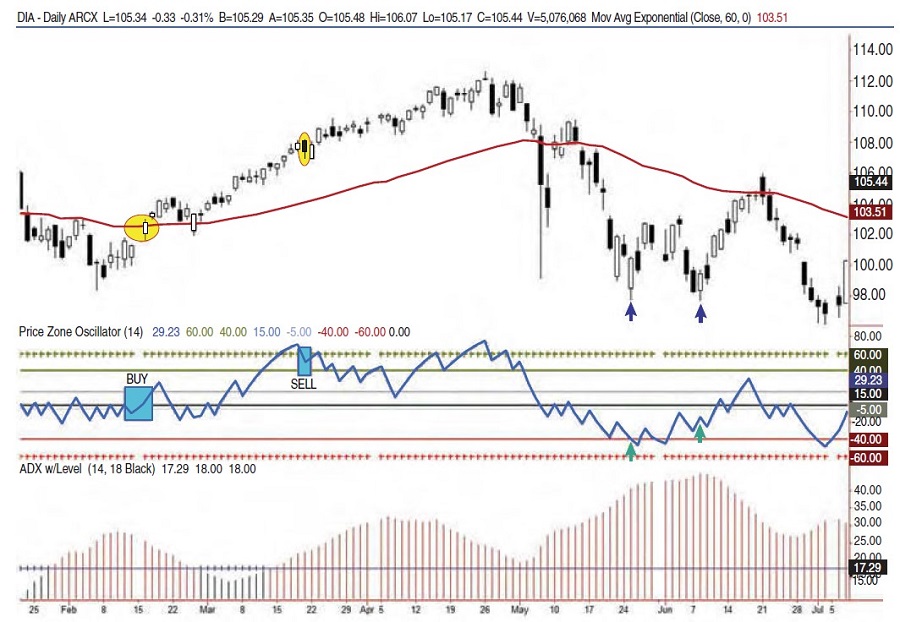
FIGURE 2: OSCILLATING SYSTEM. On February 16, 2010 DIA closed above its 60-day EMA. The ADX was 28 and PZO closed at 3.28. That was the buy signal. The trade remained long till mid-March when PZO closed well above +60 and the next day closed below it. That was the sell signal.
On February 16, 2010, DIA powered through and closed above its 60-day EMA (first yellow ellipse). The ADX was 28 and Pzo closed at 3.28 after several days of trading below zero (the black horizontal scale line). That was the buy signal (blue rectangle, labeled “Buy”). The trade remained long into March when PZO closed well above +60 and the next day closed below, on March 19 (blue rectangle, labeled “Sell”). That was the signal to exit the trade for a gain of 4.4%. This hypothetical trade used closing prices for its entry and exit, so we have to remember that past performance does not guarantee future results.
Note how in late May–early June, PZO was making higher highs (green up arrows) during the same time DIA was pulling back (blue up arrows): the May 25 and June 8 price lows are within five cents of each other. Was this a buy signal? No. The ADX was greater than 18 and DIA was trading below its 60-day EMA. PZO properly crossed from below to above -40, but without price being above its 60-day EMA, there was no buy signal.
Suggested Books and Courses About Market Indicators
Ichimoku Video Course By FX At One Glance
Original price was: $300.00.$12.25Current price is: $12.25.Forex Secret Protocol Course By Toshko Raychef
Original price was: $97.00.$19.05Current price is: $19.05.DIVERGENCE
Divergence is one of the most useful tools in the technical analysts’ toolbelt. But divergence is not just between price and an indicator, although that is how it is commonly applied. Divergence can also appear between two indicators. With a few exceptions, price ordinarily follows volume. A major exception to this is that below-average volume is considered bullish when it occurs at major bottoms after a significant decline, because by then most buyers are afraid to get back into the market.
Most of the time, PZO and VZO are in sync with each other. But since price usually follows volume — that is, PZO lags behind VZO — price usually catches up. And when price runs ahead of volume — as in, VZO lags behind PZO — price usually pulls back. When VZO is ahead of PZO (in that PZO lags VZO), this is a bullish divergence between the two oscillators. When PZO is ahead of VZO (that is, VZO lags PZO), this is a bearish divergence.
Unlike the opening long and short rules for VZO and PZO, when the ADX is above 18 (price needs to be above the 60-day EMA to open a long position and below the 60-day EMA to open a short position), when there is a divergence you can consider going long or short regardless of the relationship between the price and EMA (see PZO and VZO charts of AAPL in Figure 3).
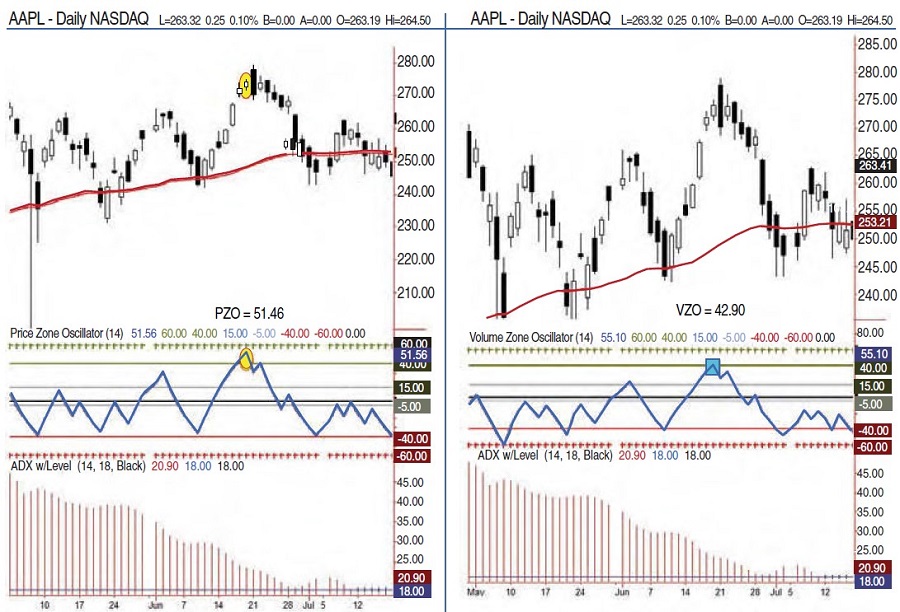
FIGURE 3: DIVERGENCE. When there is a divergence you can consider going long or short regardless of the relationship between price and EMA. On June 18, 2010, the PZO closed at 51.46 and the VZO lagged behind at 42.90. This is a bearish divergence between the two oscillators.
On June 18, PZO (left chart) closed at 51.46 while VZO (right chart) lagged behind at 42.90, a bearish divergence between the two oscillators. Confirmation that PZO would not catch up came the next day when AAPL made a bearish engulfing candlestick and both PZO and VZO closed lower.
At times the divergence is bullish, with PZO lagging behind VZO. An example of this can be seen in Figure 4, a daily chart of TLT, the 20+ year Treasury bond exchange traded fund (ETF). On July 13–14, the Pzo closed at ‑45.01 and then rose above ‑40. The VZO, however, only fell as low as -39.53 (first yellow ellipse in right-hand chart) before rising, making a bullish divergence. Price tends to follow volume, which it did over the next six days before TLT topped out and then undercut its July 13th low on July 29. Both PZO and VZO made higher lows in the same time period, creating a bullish divergence between price and the two oscillators.
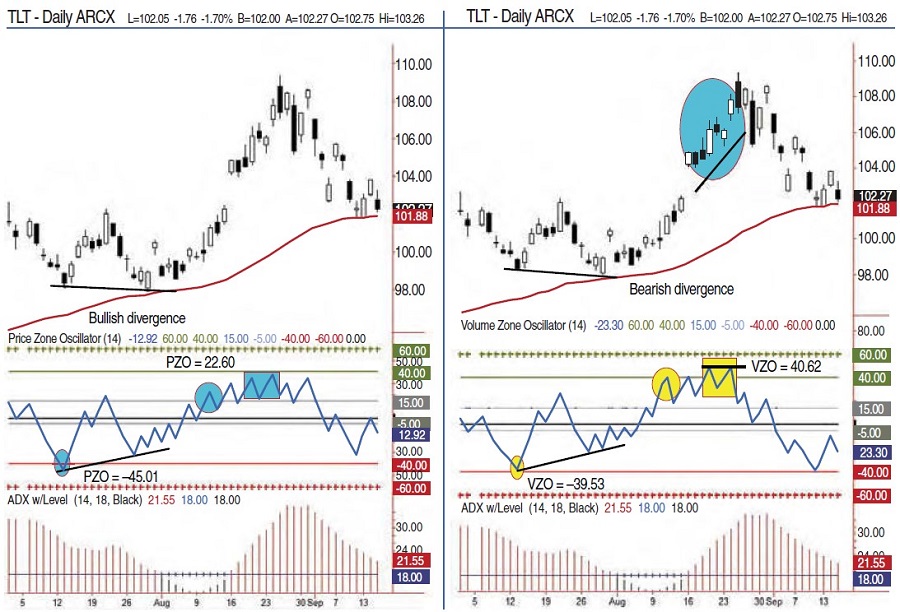
FIGURE 4: THE 20+ YEAR T-BOND ETF (TLT). If you look at the PZO and VZO side-by-side, you will notice that sometimes there are bullish divergences whereas other times there are bearish divergences.
TLT began climbing again, and on August 11, PZO was only 22.60 (second blue ellipse) while VZO had raced ahead to 40.62 (second yellow ellipse), a clear bullish divergence between the two oscillators. This is a clear example of volume leading price. TLT’s price gapped open higher just three days later. Note, however, that neither PZO nor VZO reached +60.
Between August 19 and August 24, price made a higher high while PZO made a slightly higher high (blue rectangle) and VZO made a double top high (yellow rectangle). This marked not only a bearish divergence between the two oscillators but also between price and VZO. Since PZO did not reach +40 while VZO did, a trader might have waited to see if PZO (and price) would catch up with VZO, the way it did after August 11. However, the bearish divergence between VZO and price made it unlikely that PZO would catch up with VZO, and TLT’s price headed lower from there.
PRICE AND VOLUME
The purpose of these two articles is to introduce a new method through two unique but complementary oscillators: VZO and PZO. Each aims to reveal two important aspects in the market, namely, price and volume. By following the interpretations of the two oscillators, you can get clear buy/sell signals as well as capturing the direction of the money flow in the security or market. The oscillators also aid in analyzing and defining strengths or weaknesses within the current trend and specifically, with the use of divergences, you can anticipate important turning points in the trend. By using the two oscillators, overbought and oversold areas for price and volume can be identified and used for trading.
During trending conditions, volume (VZO) tends to lead price (PZO); conversely, as the trend loses strength you will frequently find that volume lags price. Look for the ADX to begin losing strength as a confirmation that the trend may be coming to an end. Keep in mind that price and volume action at trend reversals — for example, V-bottoms and tops — can mimic the behavior of nontrending action.
When volume starts lagging behind price and ADX begins to weaken, a VZO/PZO bearish divergence can give traders advance warning and they can adapt their plans for nontrending price action. When ADX begins rising and volume again leads price, the VZO/PZO bullish divergence enables traders to enter trades earlier and position themselves either for a resumption of the trend or the initiation of a new trend.
Walid Khalil, CFTe, MFTA, is a member of the International Federation of Technical Analysts (IFTA) and chief technical strategist at Premiere Securities, Cairo, Egypt. He teaches technical analysis at the Egyptian Society of Technical Analysts (ESTA).
David Steckler is a member and a past president of the American Association of Professional Technical Analysts (AAPTA). He is also a member of IFTA and a former member of the Market Technicians Association (MTA).

